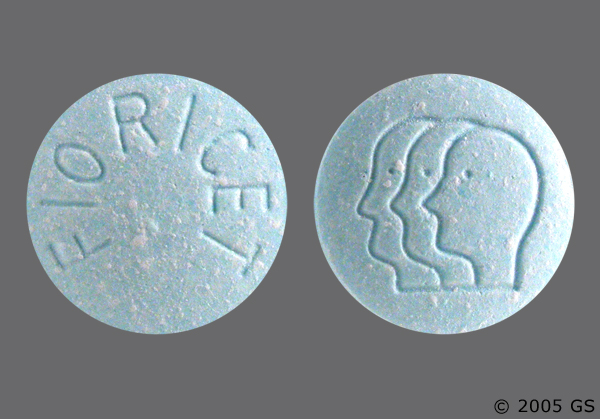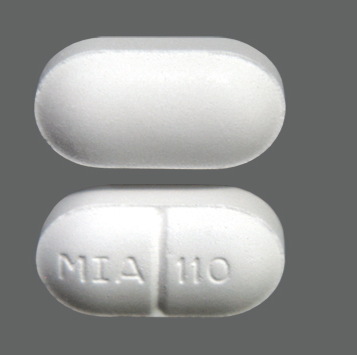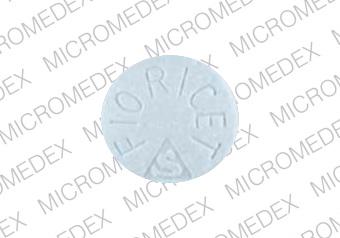Buy the cheapest Fioricet Online
Welcome to our US licensed online pharmacy – buyfioricethere.com – bringing quality, affordable healthcare from our store to your door. Order your prescription drugs from buyfioricethere.com and benefit from:
1. Discreet, no cost medical consultations with US licensed doctors and pharmacists
2. 100% FDA approved generic and branded prescription drugs sourced in the U.S.
3. Free USPS Priority Mail shipping
4. The security and accountability of a U.S. owned and operated business
5. Privacy Safeguarded Under Physician-Patient Privilege Law
6. Secure Personal & Medical Information Protected by Latest “SSL” Technology
Fioricet is a prescription headache killer, you must let your doctors know you are buying fioricet online. Off course we have US licensed doctors to review your health questionnaires and talk with you about your health conditions but our doctors approve your prescription according to your health questionnaires. Brand Fioricet is very expensive, most of online pharmacies do not sell fioricet brand directly but they sell generic fioricet. Generic fioricet has the same headache relief effects as brand fioricet.
buyfioricethere.com does not dispense nor prescribe medication directly. It is still a US licensed pharmacy who has the final authorization to approve or deny prescription requests.
A lot of patients pain suffers like to order Gabapentin, fioricet online. Because pain is very popular in North America, and almost every person has pain experience. We all take Advil, Tylenol, aspirin to relive our pain.
But some kinds of pain can not be relived by this kind of over the counter pain medicines. We have to find another kind of pain medications.
We all know fioricet is good for headaches, and Gabapentin is good for nerve pain relief. But fioricet, Gabapentin need prescription from doctor. A lot of people even fire fighters do not have insurance to cover their doctor fee. A lot of street pharmacies have much more expensive Gabapentin, fioricet than online Gabapentin, and fioricet.
When you order fioricet generic, Gabapentin online, please remember to complete the health condition questionnaire very honestly and carefully. It would be best if You already have the experience of taking fioricet from your local pharmacies and your local doctors have prescribed this medicine before. You should know the side effects and drug interaction before you order cheap fioricet online. There are a lot of medicines contains acetaminophen, butalbital, caffeine. Please read carefully the pain relief medicines’ introduction. Never exceed the max dosages of acetaminophen, or butalbital.
The acetaminophen (Paracetamol, tylenol, APAP) is very popular pain reliever. A lot of pain medicines contain apap. You must read the drug introduction very carefully if you are talking more than two medicines. Our doctors will definitely check whether you are taking acetaminophen too much, but it is your own duty to guarantee all your medicines’ acetaminophen dosage never exceed the max dosage 3000mg per day. Because Acetaminophen eliminates acetaminophen mainly through metabolism by the liver, which breaks this drug down and eventually moves it out of the body by way of the kidneys, Too much acetaminophen will damage your liver and kidneys.
You are not allowed to take fioricet if you have porphyria, or if you have recently used alcohol, sedatives, tranquilizers, or other narcotic medications. Do not use Fioricet if you have taken an MAO inhibitor in the past 14 days. A dangerous drug interaction could occur. MAO inhibitors include isocarboxazid, linezolid, phenelzine, rasagiline, selegiline, and tranylcypromine.
Fioricet® (Watson Laboratories, Inc) is a combination tablet consisting of 40 mg of caffeine (1,3,7–trimethylxanthine), 325 mg of acetaminophen, and 50 mg of butalbital (5-allyl-5-isopropylbarbituric acid). Fioricet® is primarily intended as treatment for tension headaches. Fioricet contains Butalbital, Acetaminophen, and caffeine.
Butalbital is some kind of Barbiturate. The average daily dose for the barbiturate addict is usually about 1500 mg. One tablet of fioricet only contains 50mg butalbital, and the max dosage for fioricet per day is six tablets. If you take the max dosage of fioricet, the butalbital dosage is 300mg. It is not easy to get additive if you take max dosage of fioricet. The body mainly absorbs butalbital through the gastrointestinal tract, and then it is moved to most tissues in the body. Butalbital leaves the body primarily through the kidneys as a drug that hasn’t been broken down.
Most of patients already have the experience of taking fioricet and they only refill fioricet for their tension headache, migraine, even cluster headache. We suggest you have your local doctors check your health conditions and write you a fioricet prescription at first time. You can refill online when your health conditions are not changed. But if your health condition changes, please go to your local doctors to check whether it is OK for you to refill Fioricet online.
You can buy fioricet, buy gabapentin online when you refill. Your doctor must know you are taking Gabapentin, or fioricet. Even if you order fioricet, order Gabapentin in our licensed US pharmacies, our US licensed doctors will review your health questionnaires very carefully to see whether you are OK to take the fioricet, to take Gabapentin from online sources.
You must complete your health questionnaires very carefully or you may give the doctor wrong information. Your tel number is very important for Doctors because they may discuss your health condition with you.
Before taking Fioricet
Do not use Fioricet if you have taken an MAO inhibitor in the past 14 days. A dangerous drug interaction could occur. MAO inhibitors include isocarboxazid, linezolid, phenelzine, rasagiline, selegiline, and tranylcypromine.

You should not use Fioricet if you are allergic to acetaminophen, butalbital, or caffeine, if you have porphyria, or if you have recently used alcohol, sedatives, tranquilizers, or other narcotic medications.
To make sure Fioricet is safe for you, tell your doctor if you have:
- liver disease, cirrhosis, a history of alcoholism or drug addiction, or if you drink more than 3 alcoholic beverages per day;
- kidney disease;
- asthma, sleep apnea, or other breathing disorder;
- stomach ulcer or bleeding;
- a history of skin rash caused by any medication;
- a history of mental illness or suicidal thoughts; or
- if you use medicine to prevent blood clots.
It is not known whether Fioricet will harm an unborn baby. If you use butalbital while you are pregnant, your baby could become dependent on the drug. This can cause life-threatening withdrawal symptoms in the baby after it is born. Babies born dependent on habit-forming medicine may need medical treatment for several weeks. Tell your doctor if you are pregnant or plan to become pregnant.
This medicine can pass into breast milk and may harm a nursing baby. Tell your doctor if you are breast-feeding a baby.
How Should I Take Fioricet?
Take Fioricet exactly as prescribed. Follow all directions on your prescription label. Do not take more of this medication than recommended. An overdose can damage your liver or cause death. Tell your doctor if the medicine seems to stop working as well in relieving your pain.
Butalbital may be habit-forming. Never share Fioricet with another person, especially someone with a history of drug abuse or addiction. Keep the medication in a place where others cannot get to it. Selling or giving away Fioricet is against the law.
Take Fioricet with food or milk if it upsets your stomach.
Store Fioricet at room temperature away from moisture and heat.
Keep track of the amount of medicine used from each new bottle. Butalbital is a drug of abuse and you should be aware if anyone is using your medicine improperly or without a prescription.
Fioricet Dosing Information
Usual Adult Dose of Fioricet for Headache:
Acetaminophen 300 mg, butalbital 50 mg, and caffeine 40 mg:
1 or 2 capsule(s) orally every 4 hours as needed. Maximum daily dose: 6 doses.
Acetaminophen 325 mg, butalbital 50 mg, and caffeine 40 mg:
1 or 2 tablet(s), capsule(s), or tablespoonful(s) orally every 4 hours.
Maximum daily dose: 6 doses
Acetaminophen 500 mg, butalbital 50 mg, and caffeine 40 mg:
1 tablet or capsule orally every 4 hours.
Maximum daily dose: 6 doses
Acetaminophen 750 mg, butalbital 50 mg, and caffeine 40 mg:
1 tablet orally every 4 hours.
Maximum daily dose: 5 tablets
Usual Pediatric Dose of Fioricet for Headache:
12 years and older:
Acetaminophen 300 mg, butalbital 50 mg, and caffeine 40 mg:
1 or 2 capsule(s) orally every 4 hours as needed. Maximum daily dose: 6 doses.
What happens if I miss a dose?
Since this medicine is used when needed, you may not be on a dosing schedule. If you are on a schedule, use the missed dose as soon as you remember. Skip the missed dose if it is almost time for your next scheduled dose. Do not use extra medicine to make up the missed dose.
What happens if I overdose?
Seek emergency medical attention or call the Poison Help line at 1-800-222-1222. An overdose of Fioricet can be fatal.
The first signs of an acetaminophen overdose include loss of appetite, nausea, vomiting, stomach pain, sweating, and confusion or weakness. Later symptoms may include pain in your upper stomach, dark urine, and yellowing of your skin or the whites of your eyes.
Overdose symptoms may also include insomnia, restlessness, tremor, diarrhea, increased shallow breathing, uneven heartbeats, seizure (convulsions), or fainting.
What should I avoid while taking Fioricet?
This medication can cause side effects that may impair your thinking or reactions. Be careful if you drive or do anything that requires you to be awake and alert.
Avoid drinking alcohol. It may increase your risk of liver damage while taking acetaminophen.
Ask a doctor or pharmacist before using any other cold, allergy, pain, or sleep medication. Acetaminophen (sometimes abbreviated as APAP) is contained in many combination medicines. Taking certain products together can cause you to get too much acetaminophen which can lead to a fatal overdose. Check the label to see if a medicine contains acetaminophen or APAP.
While you are taking this medication, avoid taking diet pills, caffeine pills, or other stimulants (such as ADHD medications) without your doctor’s advice.
Fioricet side effects
Get emergency medical help if you have signs of an allergic reaction to Fioricet: hives; difficulty breathing; swelling of your face, lips, tongue, or throat.
In rare cases, acetaminophen may cause a severe skin reaction that can be fatal. This could occur even if you have taken acetaminophen in the past and had no reaction. Stop taking this medicine and call your doctor right away if you have skin redness or a rash that spreads and causes blistering and peeling. If you have this type of reaction, you should never again take any medicine that contains acetaminophen.
Stop using this medicine and call your doctor at once if you have:
-
- confusion, seizure (convulsions);
- shortness of breath;
- a light-headed feeling, like you might pass out; or
- nausea, upper stomach pain, itching, loss of appetite, dark urine, clay-colored stools, jaundice (yellowing of the skin or eyes).
Common Fioricet side effects may include:
-
- drowsiness, dizziness;
- feeling anxious or restless;
- drunk feeling; or
- sleep problems (insomnia).
This is not a complete list of side effects and others may occur. Call your doctor for medical advice about side effects. You may report side effects to FDA at 1-800-FDA-1088.
Fioricet Headache Reliever
Butalbital, acetaminophen, caffeine, and codeine combination is used to relieve symptoms of tension (or muscle contraction) headaches. Extended and repeated use of this product is not recommended.
Butalbital belongs to the group of medicines called barbiturates. They act in the central nervous system (CNS) to produce their effects.
Acetaminophen is used to relieve pain and reduce fever in patients. It does not become habit-forming when taken for a long time. But acetaminophen may cause other unwanted effects when taken in large doses, including serious liver damage. Although rare, use of acetaminophen has been reported to lead to liver transplantation and death, usually at high doses and when multiple acetaminophen-containing products have been used.
Caffeine is a CNS stimulant that is used with pain relievers to increase their effect. It has also been used for migraine headaches. Codeine belongs to the group of medicine called narcotic analgesics (pain medicines). It acts on the central nervous system (CNS) to relieve pain.
When butalbital or codeine is used for a long time or in large doses, it may become habit-forming, causing mental or physical dependence. However, people who have continuing pain should not let the fear of dependence keep them from using narcotics to relieve their pain. Mental dependence (addiction) is not likely to occur when narcotics or barbiturates are used for this purpose. Physical dependence may lead to withdrawal side effects when you suddenly stop taking the medicine. In patients who get headaches, the first symptom of withdrawal may be new (rebound) headaches.
This medicine is available only under a restricted distribution program called the Opioid Analgesic REMS (Risk Evaluation and Mitigation Strategy) program.
This product is available in the following dosage forms:
- Capsule







 Avoid taking Fioricet with medications that affect your concentration, such as other narcotic pain relievers, general anesthetics, sleeping pills, anti-allergy medications, sedative-hypnotics, and tranquilizers (such as chlordiazepoxide). These may cause further drowsiness.
Avoid taking Fioricet with medications that affect your concentration, such as other narcotic pain relievers, general anesthetics, sleeping pills, anti-allergy medications, sedative-hypnotics, and tranquilizers (such as chlordiazepoxide). These may cause further drowsiness. The lethal dose of a barbiturate is far less if alcohol is also ingested. Major withdrawal symptoms (convulsions and delirium) may occur within 16 hours and last up to 5 days after abrupt cessation of these drugs. Intensity of withdrawal symptoms gradually declines over a period of approximately 15 days.
The lethal dose of a barbiturate is far less if alcohol is also ingested. Major withdrawal symptoms (convulsions and delirium) may occur within 16 hours and last up to 5 days after abrupt cessation of these drugs. Intensity of withdrawal symptoms gradually declines over a period of approximately 15 days.